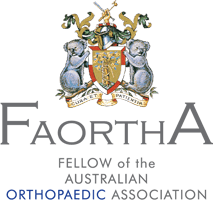Introduction
Avascular necrosis of the hip, also known as AVN or osteonecrosis, is a painful condition due to interruption of the blood supply to the femoral head (ball of the hip joint). As bone, like any other living tissue, needs a blood supply to remain alive and healthy, avascular necrosis can lead to death of the bone, destruction and collapse of the femoral head and secondary osteoarthritis.
Avascular necrosis can affect anyone, but is more common in middle-aged people (between the ages of 40-60). Men are at greater risk of developing avascular necrosis of the hip compared to women. Both hips can be affected in a number of cases.
Causes
Anything that causes an interruption or disruption to the blood supply to the femoral head can lead to avascular necrosis. The common causes include:
- Trauma – fractures and dislocations around the hip can damage the blood vessels supplying the hip and can lead to impaired circulation of the femoral head.
- Alcohol – overconsumption of alcohol can eventually can cause fatty deposits to form in the blood vessels leading to decreased circulation to the bone.
- Steroids – although corticosteroid (such as prednisone) use is one of the most common causes of avascular necrosis, the exact mechanism responsible is unknown. It has been suggested that corticosteroid use may cause increasing fat levels in the blood, contributing to reduced blood flow. Avascular necrosis can be related to high-dose or long-term corticosteroid use.
- Medical conditions – avascular necrosis can also be caused by a number of other medical conditions including gout, radiotherapy, infection, inflammatory arthritis (rheumatoid arthritis, Systemic Lupus Erythematosus), pancreatitis, pregnancy, smoking, Sickle cell disease, chemotherapy, Caisson’s disease and chronic renal failure.
Symptoms
Symptoms of avascular necrosis are often related to the stage of the disease. Early on there may be no symptoms at all. The development of pain tends to be insidious and related to weight-bearing and activity. This tends to progress to pain at rest and at night and is often associated with a limp. Once the disease progresses to advanced stages with joint degeneration, the symptoms mirror those of severe hip arthritis with pain and limited range of motion.
Tests
Imaging tests can be used to diagnose avascular necrosis of the hip, determine the extent of bone death or damage, establish the stage of the disease, and predict the likelihood of progression of the disease and collapse of the femoral head.
X-rays have been classically used in the diagnosis and grading of avascular necrosis. MRI scans should ordered when x-rays are not diagnostic, but avascular necrosis is still suspected. Research studies have shown that MRI is currently the most sensitive method for diagnosing osteonecrosis in the early stages, demonstrating earlier changes in the bone and bone marrow that may not show up on an x-ray.
Non-surgical treatment
- Restricted weight-bearing – although this may improve the symptoms of avascular necrosis, it does not alter the progression of the disease.
- Medications
- Simple pain medication (such as paracetamol/Panadol) or Non-Steroidal Anti-Inflammatory Drugs (such as ibuprofen/Nurofen, meloxicam/Mobic, celecoxib/Celebrex) can be used to manage the early symptoms, but they do not alter the progression of the disease.
- Bisphosphonates (alendronate/Fosamax) are a class of drug used in an attempt to prevent or reduce the loss of bone density. Some studies have shown benefit with bisphosphonates slowing progression in the early stages of avascular necrosis but these results are inconsistent and there is conflicting evidence.





